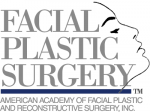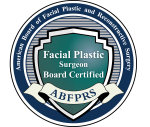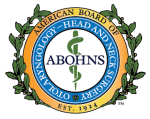Male Rhinoplasty in Orange County
The nose is a central aesthetic component of the face and therefore plays a vital role in one’s appearance. The nasal shape is a major factor contributing to a masculine appearance. Thus, male rhinoplasty should be balanced and proportional to the face while maintaining masculinity.
The Ideal Male Nose
The ideal male nose is very different from the delicate, feminine nose women often seek. A “strong” nose is typically preferred with a straight bridge or with a slight hump. “Scooped” bridges are often perceived as feminine and should be avoided for a male. The nose can be somewhat larger for a male than a female in order to enhance a strong appearance. However, the nose should not be too thin or overly wide, and the tip should have definition but should not look delicate.
That being said, there is no “one-size-fits-all” nose. Rhinoplasty is a custom procedure and the end result should be a nose which is balanced with the facial features to create harmony.
What Do “Strong Features” Convey?
Men with “strong features” convey confidence and attractiveness. Many patients believe having a strong, balanced, and symmetric look provides more opportunity for advancement in their workplace, boost self-esteem, and improves their dating life.Therefore rhinoplasty remains the most common plastic surgery among male patients.
What Can a Male Rhinoplasty Correct?
In male rhinoplasty, a number of structural and functional concerns are able to be addressed in order to achieve the best outcome. Cosmetic issues such as a twisted or crooked nose, long or short nose, asymmetric nose, nasal hump (dorsal hump), wide nasal tip, or drooping tip can all be addressed with a rhinoplasty. Functional issues can also be addressed in order to correct a breathing problem and/or repair a prior injury.
Who is a Candidate for a Male Rhinoplasty?
A consultation is the best way to determine if one is a candidate for a rhinoplasty. During the consultation Dr. Boeckmann will evaluate your facial structure and anatomy, establish treatment goals, and formulate a specific treatment plan.The best candidates are in good health, are non-smokers, are not blood thinners, and have 1 to 2 weeks to recover in order to optimize healing.
Where are the Incisions for a Male Rhinoplasty?
Nose surgery for men can be performed with one of two incision options. Each has their distinct advantage, and the incisions are chosen based upon the patient’s anatomy and the exact issues that need correction. Dr. Boeckmann will discuss which incision is right for you at the time of the consultation.
- Open Incision: The most common approach in which an incision is made on the underside of the nose between the nostrils. This allows for full visualization of the underlying nasal structure which enables a greater array of correctional techniques for precise modification. Scarring from this technique is minimal, with the resultant scar almost invisible after several months
- Closed Incision: A closed rhinoplasty is performed with all the incisions placed inside the nostrils. This is advantageous for less complex anatomical modifications. Because all the incisions are placed internally, recovery following a closed rhinoplasty is generally much faster than with the open technique.
Frequently Asked Questions
What to Expect After Male Rhinoplasty
Male rhinoplasty is an outpatient surgery typically performed under general anesthesia. Most surgeries are 2 to 4 hours, depending upon the complexity of the nasal anatomy. After surgery, a splint and bandage are applied to the nose to support it as it heals. All patients will receive detailed instructions about medications and post operative care.
Most patients experience some degree of bruising and/or swelling immediately following the surgery. Patients are instructed to keep their head elevated and to minimize physical activity for the first 1 to 2 weeks to minimize discomfort and optimize healing. The nasal bandages and any sutures are removed 1 week following the procedure. Most patients feel comfortable returning to work 10 days after surgery.
When Can I Work Out After Rhinoplasty?
Physical activity will be restricted to some degree for 6 weeks after surgery in order to optimize healing. Minimal physical activity is recommended the first 1 to 2 weeks after surgery in order to minimize bruising and swelling. Dr. Boeckmann will then modify activity restrictions on an individual basis.
Can I Blow My Nose After Rhinoplasty?
No nose blowing is allowed for the first 2 to 3 weeks following rhinoplasty. Patients are instructed to rinse their nose gently with nasal saline as needed for congestion and to sneeze with their mouths open.
Will Insurance Cover My Rhinoplasty Surgery?
Your insurance may cover some portions of your rhinoplasty procedure if significant functional problems are affecting your health. Health insurance does not cover elective cosmetic surgery.
How to Choose the Right Rhinoplasty Surgeon in Orange County
Choosing the right plastic surgeon for a rhinoplasty is critical for the success of your procedures. Dr. Jacob Boeckmann is double board-certified in both Facial Plastic and Reconstructive Surgery as well as Otolaryngology-Head and Neck Surgery. He is respected for his surgical skills and natural results in Orange County.
To learn more about the rhinoplasty procedure in Orange County, contact the office at 949-273-3112 for your consultation with Dr Boeckmann.


